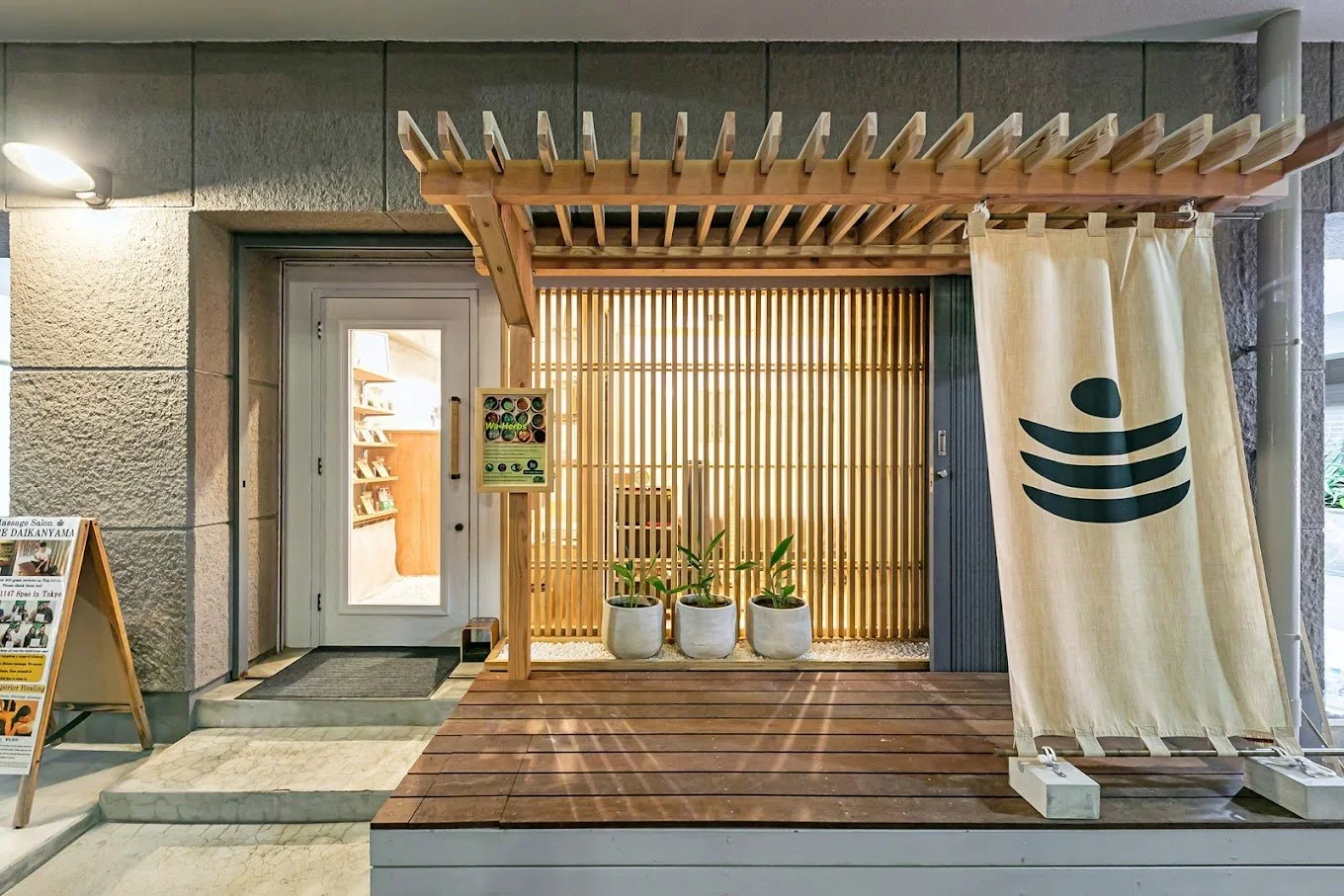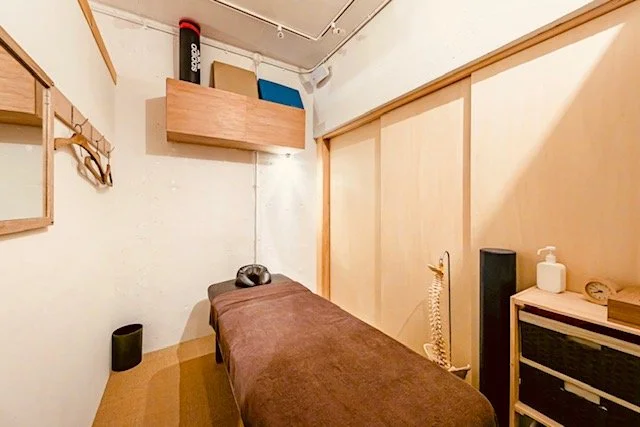Global Wellness: Japan
Global Wellness is a new series that highlights the careers of massage therapists around the world.
Ryotaro Hatanaka
In April of this year I traveled to Tokyo, where I explored traditional Japanese bathing practices in onsens and discovered the practice of Shiatsu massage. I met with Ryotaro Hatanaka at his self-started spa Waho-An Nature in the neighborhood of Seitai. Here, Hatanaka and his two employees provide services including Chiropractic Massage, Reflexology, Shiatsu Therapy, and Lymphatic Drainage. Retail purchases are available as well— Hatanaka blends his own teas, utilizing local herbs that have been prevalent in Japanese culture since before the Edo period. He also offers instructional courses on these modalities for curious travelers; I spent a day at Waho-An with Hatanaka, where he introduced me to the practices of Shiatsu and discussed what it’s like to have a career in massage in Japan.
What made you interested in becoming a bodyworker?
My parents used to run a shiatsu massage clinic as a family business. As a child I was always around shiatsu and my parents’ business. I became interested at an early age. I was able to help out with non-massage chores at this age but longed to get more deeply involved with the massage side of the business.
What was your educational background in massage? How long were your studies?
After graduating from high school, I attended a vocational school for massage therapists for three years to study the basics. After passing the national certification in shiatsu and graduating from school, I continued to update my knowledge and skills. Over 14 years, I have regularly attended a range seminars and in-service training.
Note that in Washington, DC, the educational requirements for practicing massage therapy are just 500 hours. Japan, a country known for excellence in its crafts, requires 2,490 hours for certification in Shiatsu!
Did you have to obtain a license, permit, or certification to legally practice massage in Japan?
Yes, I needed the massage therapist license certified by the Ministry of Health, Labor and Welfare, and had to pass a national exam after attending a vocational school for three years. It is a highly competitive process and difficult to pass. Only 60% of those attempting to gain a license pass.
Where did you work when you first began practicing massage?
I began at an osteopathic clinic located in Kawasaki City. This clinic was part of a large chain of clinics.
When did you start your business?
Five years ago.
What made you decide to start your own business?
The clinic I worked at provided inexpensive treatment through the National Health Insurance. They accessed the health insurance system on the basis treating injuries. While this is commonplace in Japan I was not happy to be a part of gaming the insurance system in this way. I wanted to treat people who would come to me because they felt my treatment was worth it, even if they had to pay for it themselves without relying on the national health insurance.
What were the most important initial steps when preparing to open?
When I first started, I was very mindful of keeping initial costs low and starting small.
What have been the greatest successes of your business so far?
My greatest success has been creating a market focusing on overseas people (both this based here and those visiting as tourists). I am a pioneer in this field, and am dominating it.
What have been some of the greater challenges?
Due to COVID-19, the number of tourists dropped to zero, and it took some time to build the number of foreigners living in Japan as my core clientele.
What do you charge for your services? Is this more, less, or about equal to similar services in your area?
The price is 12,000 yen for 60 mins. This price is average for my area.
Note: this is equivalent to $77.49 USD today.
How do new clients usually find you?
Most clients find me through Google or TripAdvisor reviews.
What are the demographics of your clientele—are they most men, women, locals, visitors?
The ratio of men to women is 4:6, with more women than men. The majority of people are in their 30s and 40s. The ratio of tourists to “locals” is about half and half. Although 90% of the local clients are foreigners based in Japan.
What changes and goals are you hoping to see for Waho-An over the next few years?
I am now receiving requests from many people from different countries who want to learn shiatsu from me. I have already established courses to facilitate this. I would like to teach my method and help them to spread it in their home countries, where they can establish my branches all over the world.
Do you have a favorite modality of massage that you practice?
My favorite technique is a combination of shiatsu massage and chiropractic adjustments. This is the mainstay approach of my clinic Waho-An.
What makes your services special?
We are unique since we offer services in English and our clients are about 90% non-Japanese. The other key difference is our mix of shiatsu and chiropractic adjustment.
What is your favorite thing about what you do?
I enjoy helping people, and solving their issues. Through communication I can identify and solve the problems my clients are facing. It is very satisfying to connect with client wholeheartedly and see their happiness when they are relieved of pain.
What is the hardest part of your work?
Since the human body is different for everyone, we need to be flexible. To accommodate each client’s unique problem, we cannot fixate on a set way of doing things. I would say that determining the best way forward for each individual client is a very complex puzzle. This puzzle and its solution, while difficult, is very interesting to me.
What kinds of tools and products do you use in your services, if any?
My hands are my tools. Hands are by far the best tool since we can feel and sense the condition of the client’s body and adjust the right amount of pressure in a controlled way.
What do you value most about the practice of massage therapy?
I am fascinated by each customer and their situation and enjoy providingall the treatment and care that I can.
Because clients are experiencing many diverse and unique issues, they are vulnerable and open the sharing their problem. I aim to repay their openness by solving their issues for them.
How significant is the practice of massage therapy in Japan?
Massage therapy is very popular in Japan. There is a Japanese custom going back many centuries whereby children massage their parents’stiff shoulders to relieve symptoms. Perhaps as a remnant of this custom, Japanese people often go for massages when they have stiff shoulders or back pain.
How seriously is the profession taken?
In the past, massage was recognized as a profession for blind people. In modern times, massage is not recognized with a national qualification, and many people think that anyone can become a massage therapist with a little practice. They can also open their own shop. However, there are restrictions on advertising, and there is a law that requires a national qualification if you want to use the word "shiatsu" to attract customers.
Does health insurance cover massage therapy in Japan?
Health insurance will only cover cases that a doctor diagnoses.
Is massage therapy often recommended to patients by their doctors in Japan?
In Japan, doctors and massage therapists do not have a very cooperative relationship, and doctors do not proactively recommend massage. This tendency is particularly noticeable in orthopedics. I believe that if people go to massage therapists, they will not need orthopedics.
What modalities of massage are most popular in Japan?
In the past, Shiatsu was popular, but nowadays I think people are more likely to spend money on oil massages and beauty facial massages.
What kinds of wellness practices outside of massage (ie. pilates, meditation, tai chi) are common in Japan?
Yoga, strength training, running, etc. are popular.
What do you want readers to know about massage therapy in Japan?
I am sad to say that the traditional Japanese technique of shiatsu has lost popularity in recent times. However, shiatsu can be easily performed anywhere. Not only does shiatsu provide a pleasant comfortable stimulation to loosen stiff muscles, but also throughtreating seeming unrelated areas, such as the back, we can also improve the functioning of internal organs, making it effective in improving the health of the entire body.






